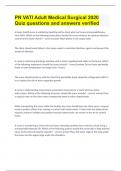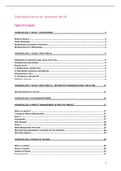Summary
Summary Book Social and Cross-cultural psychology + list of concepts
- Course
- Institution
- Book
In this document you will find a summary of the book an introduction to social psychology per chapter, and also a list of definitions per chapter.
[Show more]














